No products in the cart.
Return of the Captives
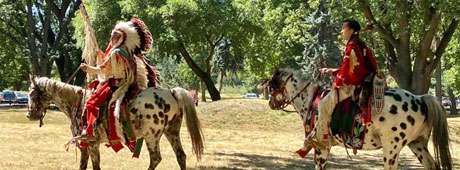
How the Nez Perce Rallied America and Rescued Their Heritage
By Trevor James Bond
In a new book, Coming Home to Nez Perce Country: The Niimíipuu Campaign to Repatriate Their Exploited Heritage (Washington State University Press), librarian and historian Trevor James Bond describes an invaluable ethnographic collection and an astonishing campaign to bring it back to its rightful owners. Here, the author summarizes that story from his perspective.
On Saturday, June 27, during a Nez Perce (Niimíipuu) ceremony in Spalding that included a horse parade, drumming, singing, and speeches, my wife Robin and I were left in tears. We had just witnessed a celebration of the renaming of the most remarkable ethnographic collection in Idaho, which had been taken from the tribe 174 years earlier.
In 1847, the missionary Henry Spalding shipped an array of Nez Perce items to a friend and benefactor in Ohio. It remained in that state for more than 130 years, when most of it returned to Nez Perce country on loan. And then in 1996, the Nez Perce Tribe mounted a sophisticated fundraising campaign that garnered $608,100 to enable the purchase of the collection from an Ohio museum. Finally, on this day in June, after careful deliberation, the tribe had commemorated the twenty-fifth anniversary of buying back the Spalding-Allen Collection by renaming it Wetxuuwíitin’, which translates to “returned after period of captivity.”
Nakia Williamson-Cloud, director of the Nez Perce cultural resources program, said at the event, “The renaming of this collection is a step to reclaiming ownership of one of the most significant ethnographic collections in existence. More importantly, renaming helps us in rejecting colonialism and its impacts on our way of life.”
Wetxuuwíitin’ was one among thousands of such collections that were shipped away great distances—but it was unusual, because most of it eventually came back on loan. The vast majority of the other collections assembled by government officials, soldiers, and missionaries have never returned to their home communities, and remain stored in museums and private collections.
When I first heard about the collection at the start of my postgraduate studies in history, I was surprised to learn that the tribe had raised such a staggering sum to buy it back. And I wondered, why did they have to pay for it in the first place? The fact that one of my favorite bands, Pearl Jam, played a small role in the fundraising effort was also intriguing. I began to research the story, and discovered that Wetxuuwíitin’ was the largest and earliest documented surviving collection of Nez Perce cultural material. It included beautifully made dresses and shirts with elaborate decorative elements. The items were not only in exquisite condition and extremely rare but they also served as an important bridge between contemporary Nez Perce culture and how the Nez Perce lived during early contact with white people.
Painted rawhide fenders on a woman's saddle from the Wetxuuwíitin’ collection.

A cradleboard.

A lavishly beaded cradleboard.

Detail of a woman's dress.

A woman's dress.

A man's shirt.

Cover of the new book.
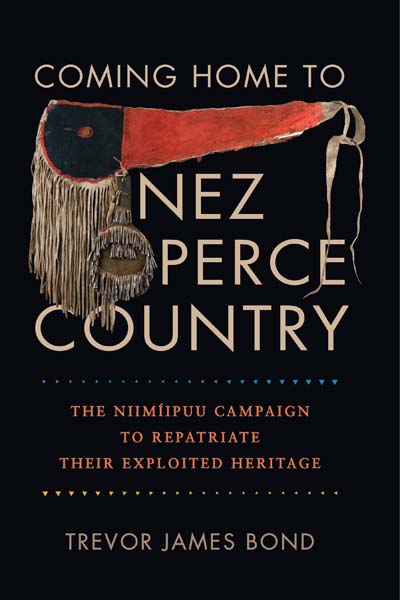
Nakia Wlliamson-Cloud and his son Nakia Cloud approach the naming ceremony site.
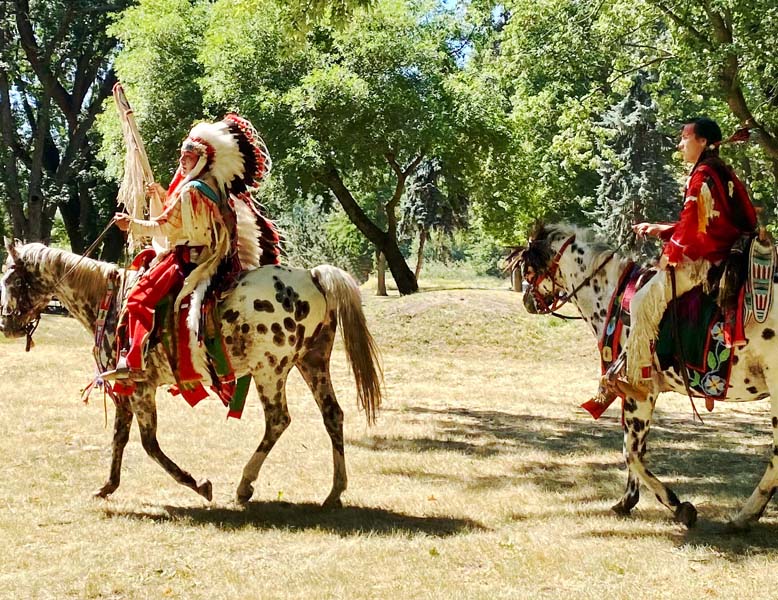
Nakia Williamson-Cloud and Stacia Morfin during the naming ceremony.

Nakia Williamson-Cloud and Trevor James Bond at the ceremony.

Two barrels of “Indian curiosities” had been shipped in 1847 by Henry Spalding to Dr. Dudley Allen in Kinsman, Ohio. The barrels contained exquisite Nez Perce shirts, dresses, baskets, and horse regalia—some decorated with porcupine quills and others with precious dentalium shells and rare elk teeth. Donated to Oberlin College in 1893 and transferred in 1942 to the Ohio Historical Society (OHS, now called the Ohio History Connection), the collection languished in storage until Nez Perce National Historic Park curators rediscovered it in 1976. The OHS loaned most of the artifacts to the National Park Service, where they received conservation treatment and were displayed in climate-controlled cases in Spalding. Nez Perce cultural specialist Josiah Pinkham told me the collection embodies “the earliest and greatest centralization of ethnographic objects for the Nez Perce people. You don’t have a collection of this size, this age, anywhere else in the world.”
Twelve years later, the OHS abruptly recalled the collection. Years of public pressure and negotiations followed, until the group agreed to sell the articles to the Nez Perce at their full appraised value of $608,100. The OHS gave only a six-month deadline to pay in full. The tribe formed the Nez Perce Heritage Quest Alliance and mounted a brilliant grassroots fundraising campaign. One day before the deadline, in June 1996, they met their goal.
My research made me realize that I saw the collection differently from the Niimíipuu experts I interviewed. Like them, I admired the designs and condition of the artifacts and their documented age. However, as I dug deeper during interviews with curators and members of the tribe, I came to appreciate that they viewed these items not only as museum pieces but as examples of techniques that gave them an opportunity to repatriate skills and ways that their ancestors lived. In particular, the use of decorative porcupine quillwork— present in the collection—was replaced by beads during sustained Euro-American exchange, when beads could be readily attained. The collection’s examples of quill decorations revealed how these materials were processed and sewn onto the garments, thereby providing inspiration to contemporary Nez Perce artists.
Henry Spalding did not directly tell how he acquired most of the goods or talk about the individuals who made them. Nor did he elaborate on the medium of exchange. “The frustrating thing,” retired Nez Perce National Historical Park curator Bob Chenoweth told me, “is that given all that Spalding wrote, he didn’t write down where any of this stuff came from— who gave it to him. And I don’t believe that the Indian people themselves that gave up their things understood that they were going to be preserved.”
Former Nez Perce Tribal Executive Committee member Bill Picard drew a distinction for me between the goods the Nez Perce traded and the regalia made for their families. “These items that were taken [by Spalding] weren’t made to be bought and sold.” He explained that his community travelled along the Columbia River and bartered goods such as beadwork, buckskin, and elk hides. “These were the things that were materialistic, that were basically like money, to be bought or bartered with. But the items that they created for their regalia…it wasn’t…to be bought and sold. It was material to be heirlooms, to be sacred, to be kept so that your children enjoyed these same things.”
Any monetary valuation of Nez Perce material culture is problematic. “You can’t put a value on somebody’s necklaces or eagle feathers or beaded dresses or ribbon shirt,” Bill said. “You can’t put a value on it, because…these items are handed down through generations.” Furthermore, he pointed out, Nez Perce regalia provides connections between the Nez Perce and their ancestors. “If I was wearing the regalia and I went to Pendleton, they would look and say, ‘I remember his grandfather used to wear that.’ Or, you know, ‘His grandfather received that from this person or that person.’” To sell regalia was an abhorrent thought. Such a sale, Bill explained, would be like “selling part of your body.”
Weeks into the campaign to buy back the collection, help came from Idaho schoolchildren. On February 9, 1996, the Nez Perce Tribal Executive Committee (NPTEC) issued a press release honoring fourth-grade students at Frontier Elementary School in Boise who had initiated fundraising activities in response to learning in the classroom about the tribe’s campaign. Students worked with their teachers to contact all fourth-graders in the state, and a three-hundred-dollar grant from the school’s Parent Teacher Organization provided the funds to cover the bulk mail donation requests. Their teacher, Susan Hutchinson, said after she told her students about the collection “their reaction was ‘the Nez Perce are part of our state’s heritage. We’ve got to do something. There’s things we can do as kids.’”
Student Kelsey Hawes suggested popcorn sales. Classmate Carley Packard said, “Idaho’s people should keep the artifacts, because the Nez Perce live here, and it is the Nez Perce Tribe that made them.” Nez Perce chairman Samuel Penney recognized the initiative of the Frontier Elementary students by issuing certificates of appreciation presented by a tribal representative and by sending a group of Nez Perce drummers and dancers to the school.
Thousands of students contributed to the campaign. In Caldwell, eight hundred students donated change. In Blackfoot, they collected aluminum cans and sold cupcakes. In Boise, they made pizza bread. In Prosser, Washington, the students washed cars, sold baked goods, and hosted a dunking booth. According to history teacher Dean Smith, “The kids like the idea of being part of something. This is a tangible thing, something they can touch and feel.” Marcella Gibson, a teacher at Jefferson Junior High School in Caldwell, said the sale of the collection by the OHS “kind of incensed me. The kids said that’s not right, they shouldn’t be doing that.” As of April 7, 1996, the Nez Perce Tribe had raised nearly two hundred thousand dollars.
Acknowledging the energy behind schools collecting money led the Heritage Quest Alliance to launch a coordinated plan to ask schools to contribute $57.90, a symbolic amount that was based on Spalding’s estimate of the value of the collection in a letter he wrote to Allen. Tribal member Richard Ellenwood motivated students around the country when he said, “Schoolchildren all over Idaho have shown their concern by helping us raise funds. We now call upon the children of America to join us and protect our past.”
Tribal chairman Samuel Penney told the press, “We hope all Americans, especially our children, will join us. Their reward will include the feeling of joy when some day they visit the collection here in Spalding knowing that they helped bring it home.”
Students at Jefferson Junior High in Caldwell competed with Jefferson Junior High in Columbia, Missouri, to see who could collect the most money. The Caldwell kids contributed $1,320 through candy and cookie sales, car washes, and donations from the community. At Housel Middle School in Prosser, Washington, students raised money through bake sales, car washes, and a dunking booth. Students at Lena Whitmore Elementary School in Moscow recycled cans. Schoolchildren sent in pictures, cards, and letters in support of the efforts. All of these gifts were matched up to fifty thousand dollars by an anonymous donor.
In addition to the money donated by schoolchildren, something far more significant occurred. The students studied Nez Perce culture and saw the connection between the contemporary Nez Perce Tribe and their 19th-Century ancestors. To Bill Picard, the campaign “was not only to ask for donations, but also to raise awareness of what the tribe’s culture is, and…what the tribe does. And that we’re not just a culture that’s read about in a book but that we’re actual people. That we’re here and that we do practice, continue to practice, our culture.” He told me, “These kids felt that urgency…the tribe went out to enhance the knowledge of local people as to what the tribe is and what it does. And that continues today.”
National Public Radio (NPR) broadcast a story on the collection campaign on their Morning Edition program, which flooded the tribe with calls of support. After hearing the NPR story, listener Brian Colona mailed a donation from San Diego to the Heritage Quest Alliance. He included a note: “I was appalled at the greed of the museum in Ohio for requiring payment for your artifacts. Once again, I feel shame for being a white American. I hope my donation helps you reach your goal and deadline.”
Fundraiser Tom Hudson said, “We’re getting calls from all over the U.S.—from Hoboken, New Jersey to Columbia, Missouri to Missoula, Montana, to Prosser, Washington.” Nationwide, sentiment was strong that the collection should remain in Idaho, he said. Tribal historian Allen Slickpoo, Sr. reflected, “Our people saved the Lewis and Clark Expedition. It is fitting that two hundred years later, all Americans have the opportunity to honor this act.”
Major rock bands joined the schoolchildren in pledging $57.90. These included Pearl Jam, Soundgarden, Alice in Chains, Pete Droge, and the Presidents of the United States. The bands also lent their support through announcements on the cable music channel MTV. Four hundred rock radio stations spread the word of the campaign. The members of Alice in Chains signed drumheads, and Pearl Jam’s Eddie Vedder sent a signed platinum CD to Kerri-Ann Andrews of Lewiston, who sold the items as part of a benefit auction and concert that yielded $2,960.14. Tom Hudson described the bands as “really enthusiastic about it.” He reflected, “I think that our younger people will hear from the celebrities that are important in their lives that this is an important cause. It’s telling our country that this is a cause for everyone.”
After months of intense effort, the Nez Perce nearly had enough money to purchase the collection. On May 30, they were $45,000 short of the required $608,100. Tom Hudson warned there would be no flexibility in meeting the full price required by OHS. “We must have the full amount on time.” As many small gifts continued to arrive by mail, Hudson arranged a fifty-thousand-dollar matching pledge from Tom Redmond, the founder of a hair products company. Feeling optimistic that the collection would not have to be sent back to Ohio, Tom Hudson said, “At this point, I would have to say, ‘Over my dead body.’ I don’t often say something like that, but I am absolutely convinced we will succeed.” On May 31, one day before the deadline imposed by OHS, the tribe achieved its goal of raising the full $608,100. Potlatch Corporation donated twenty-five-thousand dollars, which, when combined with other smaller donations, put them over the mark. Boise’s Frontier Elementary School, which had alerted all the state’s fourth-graders, sent a check for twenty-five-hundred dollars.
Chairman Penney framed his remarks broadly when he spoke of the campaign’s success. “This purchase officially ends a 150-year odyssey for an extraordinary part of our heritage. Our people and supporters all over the U.S. will celebrate the homecoming of the Spalding-Allen Collection.” A press release said support came from more than two thousand donors and fifty schools that contributed the symbolic amount of $57.90. Donations also came from Germany, Switzerland, France, Italy, and Japan. At the height of the campaign, Tom Hudson and his fundraising assistant Pam Palmer received thirty to fifty calls a day, at all hours of the day and night. “The people of the United States have demonstrated that they value our Native American heritage,” Chairman Penny said.
“This historic event should not be seen as an acquisition of museum artifacts. It is a restoration of an important part of the Nez Perce culture,” he added in a story published the next day. “We found partners and friends when we did not expect them. And we have seen a light of respect and compassion which suggests a greater future for our United States.”
Nakia Williamson-Cloud recalled that many people responded to the campaign and “realized that this is where these things belong, here in this land. And so I think in that way it was a good thing. And I think our leaders that at that time, our elders that were alive at that time…were making good decisions.” He reflected, “I guess we’re always asking ourselves what are we doing, and are we doing the right thing? I think we can walk away and say what was done and what was accomplished was a good thing for us. Not only for us but, again, for this land and for the people that now live here.”
The items in the collection “needed to be home,” according to Bill Picard. “They needed to be with the family… They were lost in Ohio.” He said, “It was like reconnecting with your elders. Reconnecting with maybe your great-great-grandfather, who you’ve only seen in pictures. Or maybe only heard about in oral history. Only heard about in stories. But here’s some items that belonged to him. So there’s a reconnection between you and those that made these items.” Nez Perce artist Kevin Peters remembered that before the fundraising goal was met, the boxes were ready to pack up the collection and ship it back to Ohio. He asked himself why the tribe had to purchase these things, and gave himself an answer. “It’s not necessarily ‘we’ [the Nez Perce Tribe]. It is the American people. Because we had people from all over. We had kids, you know, with jars of pennies. And it was an amazing, an amazing event in the end.” Kevin recalled, “When it finally came through, it was like, hurray! Now we can burn the boxes.”
The cause to repatriate the collection resonated with the American public. “It became an American phenomenon,” said Tom Hudson. “It became an American cause. An entire nation came forward to help a tribe. This may be unprecedented.”
The Wetxuuwíitin’ Collection is currently on display at the Nez Perce National Historical Park in Spalding, Monday-Sunday 8:30-4 p.m. A selection curated by Nez Perce experts also can be viewed online: plateauportal.libraries.wsu.edu/collection/wetxuuwiitin-formerly-spalding-allen-collection-nez-perce
This content is available for purchase. Please select from available options.
Register & Purchase Purchase Only
Register & Purchase Purchase Only

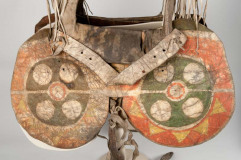
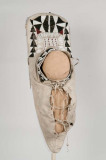
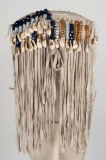
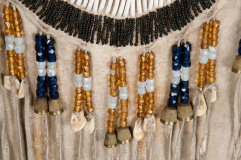
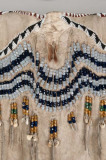
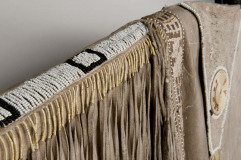
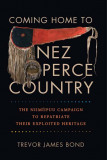
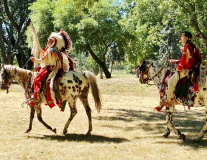
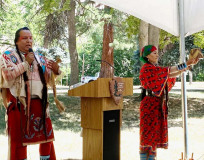
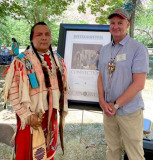
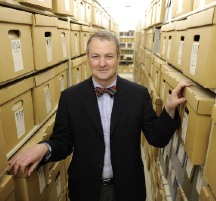
Comments are closed.